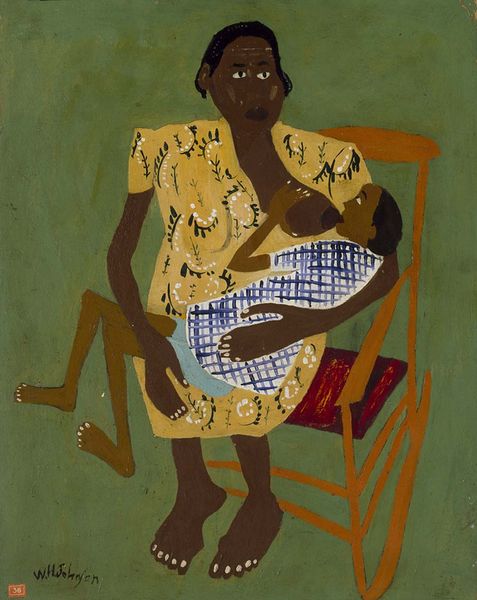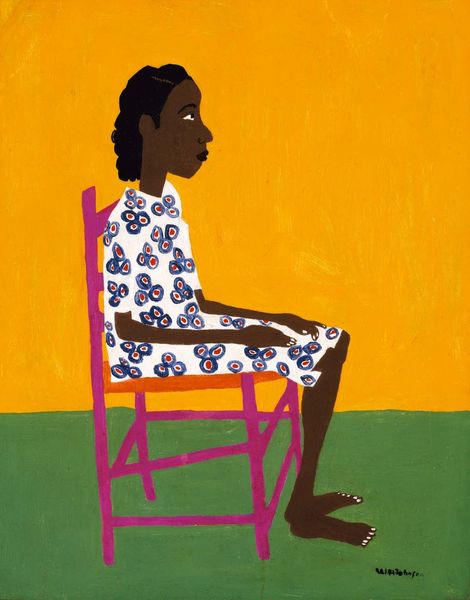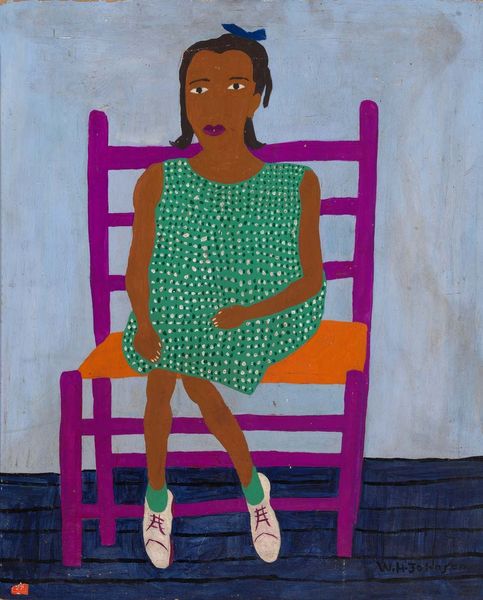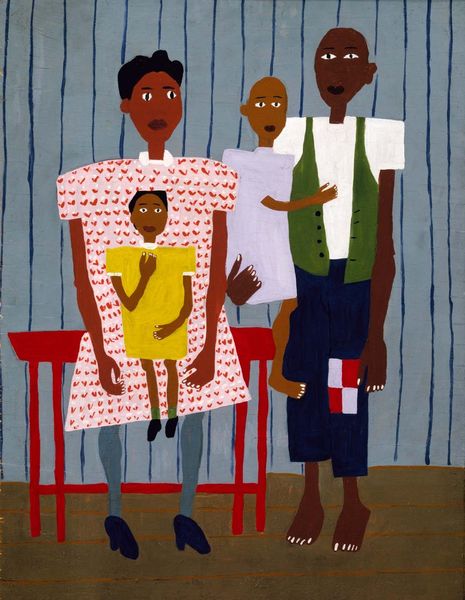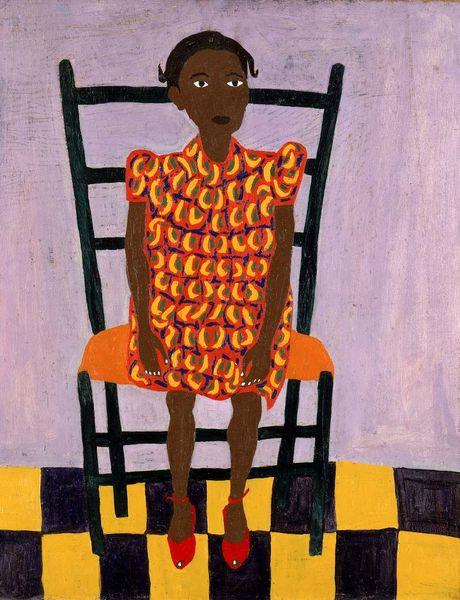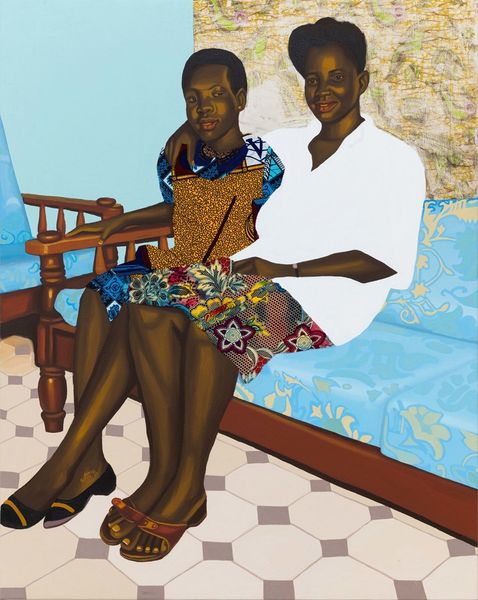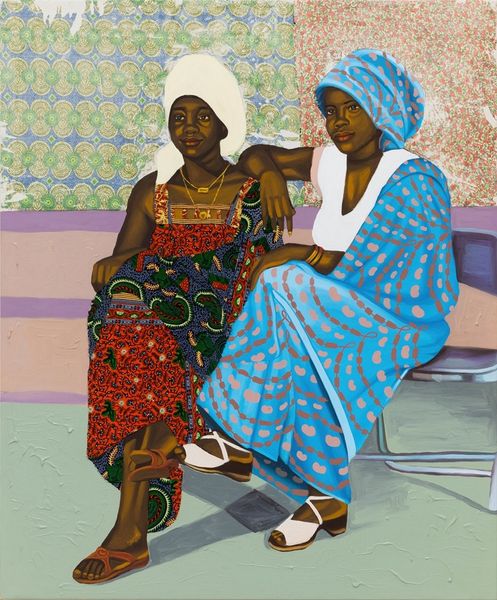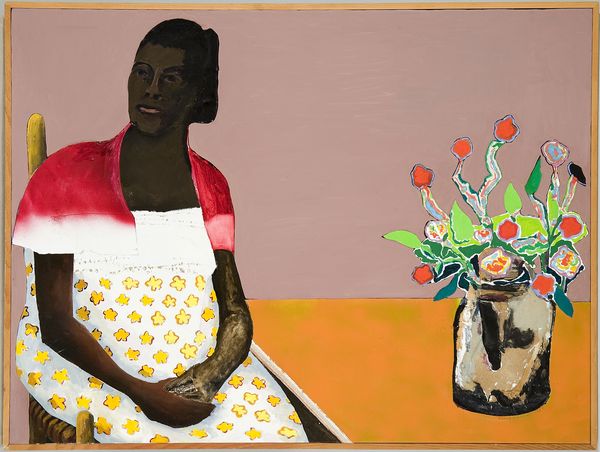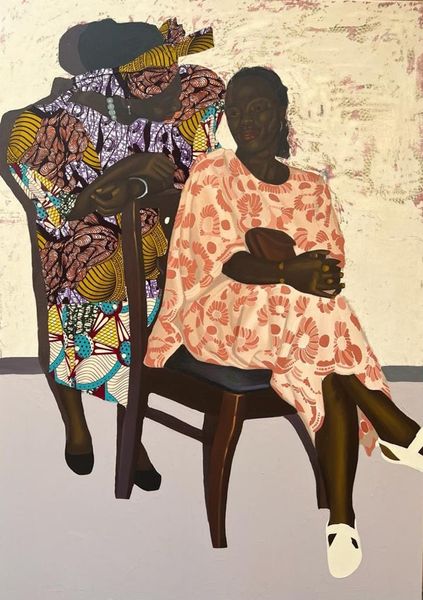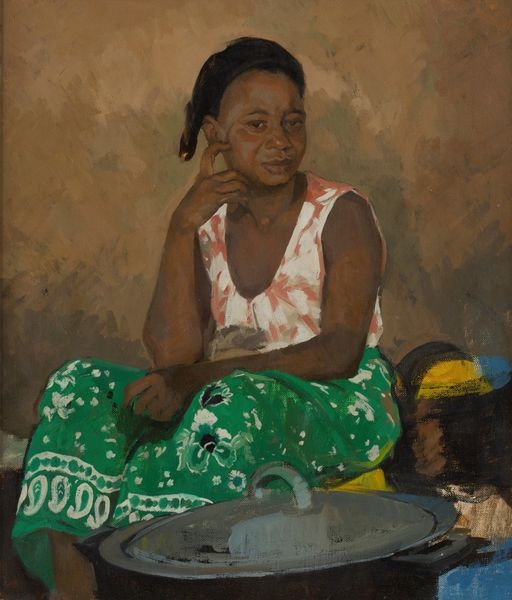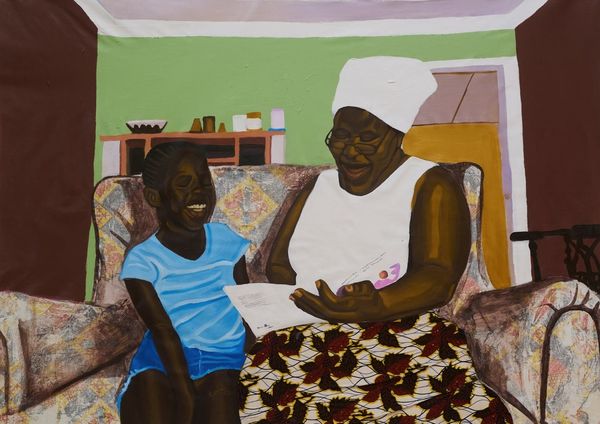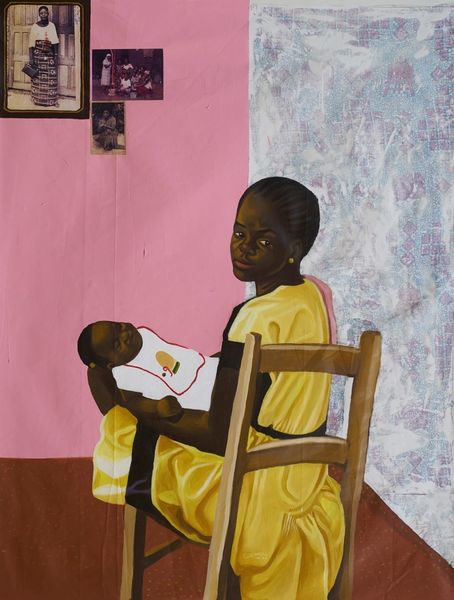
painting, oil-paint
#
portrait
#
painting
#
oil-paint
#
harlem-renaissance
#
figuration
#
genre-painting
Copyright: William H. Johnson,Fair Use
Curator: Immediately, I’m struck by the blunt, almost rudimentary handling of paint and the everyday intimacy depicted. Editor: Welcome. This is William H. Johnson's "Sis and L'il Sis," painted around 1944. We see a woman seated, nursing a child. Johnson rendered this tender image in oil paint. Curator: The very visible brushstrokes indicate that his process embraces materiality. There’s little attempt to conceal the construction of the painting; rather, the painting’s status as an object, made through human labor, is accentuated. Notice how flat the figures are, simplified shapes of brown and colored clothes against a flat background. Editor: Johnson often used simplified forms. Looking at this work, I think about the public role art played in celebrating Black family life. Its intimate simplicity allows it to address a community directly and to promote a shared cultural understanding of family and resilience, especially in a historical context rife with racial injustice. Curator: The title points directly to that intimate connection. There is also the direct link of feeding from the maternal source. Considering that the material of paint allows him to emphasize form while telling a larger societal narrative is pretty powerful, especially thinking of access to healthcare and its impact on black families during that time. Editor: Absolutely. The positioning of the figures within the frame also contributes to the feeling of warmth. Their closeness highlights the shared experience but is placed at a bit of a distance from the viewer. It creates a space for contemplation about both private moments and also about the value that society gives them. I find it incredibly compelling. Curator: Considering that these portraits celebrate domestic and relational economies brings a very personal level of engagement while still offering a reading within larger societal contexts and their shaping of labor, access, and materials. I have learned a lot. Editor: Agreed. The dialogue between art and audience provides insights, highlighting what we often fail to consider in history's broader narratives.
Comments
No comments
Be the first to comment and join the conversation on the ultimate creative platform.
